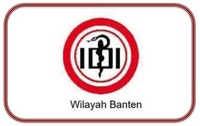Balb/C Mice Optimization as Triple Negative Breast Cancer ModelWith 4T1 Cells and 4T1 Cells 3D Culture Inoculation Methods
DOI:
https://doi.org/10.15408/2rk7tt03Abstract
Background: Triple Negative breast cancer (TNBC) is a subtype of breast cancer with negative expression of Progesterone Receptor (PR), Estrogen Receptor (ER), and Human Epidermal growth factor Receptor 2 (HER-2). Among other types of breast cancer, TNBC has a high rate of malignancy and recurrence, invasive, distant metastases, and resistance to conventional therapy. An optimal TNBC model is needed for drug discovery research in targeted therapy. However, optimizing the TNBC animal model by inoculating the 4T1 tumor cell line has a number of challenges and it is quite hard to be developed, especially in Indonesia.
Methods: This quasi-experiment study used 28 Balb/c mice divided into four groups (7 mice
respectively), group A (injected with basal medium), group B (injected with 4T1 cell), group C (injected with 4T1 cell + Geltrex), and group D (injected with 3D Culture 4T1 cell + Geltrex). After being injected, mice were followed up for 35 days. Once a week they had to be observed by measuring body weight and tumor volume. After 35 days, mice were sacrificed. Liver, lung, brain, and mammary gland were analyzed histopathologically with Hematoxylin-eosin (HE). Chi-square statistical analysis was done to compare intergroups.
Results: Histopathologically, there was a group that found positive samples of Invasive Ductal Carcinoma (IDC)-like with a percentage of 28. 57% (2 out of 7), namely group C. Meanwhile, group B and D did not find any positive samples of TNBC, but in the mammary tissue, there was inflammation and epithelial hyperplasia. No distant metastases were found in the liver, lungs, and brain, however, there was inflammation in these secondary organs. Statistically, there was no significant difference between treatment groups with p-value = 0.41.
Conclusion: The 4T1 cell inoculation method can produce IDC-like on HE with an incidence of 28.75% (2 of 7 individuals) in group C.







